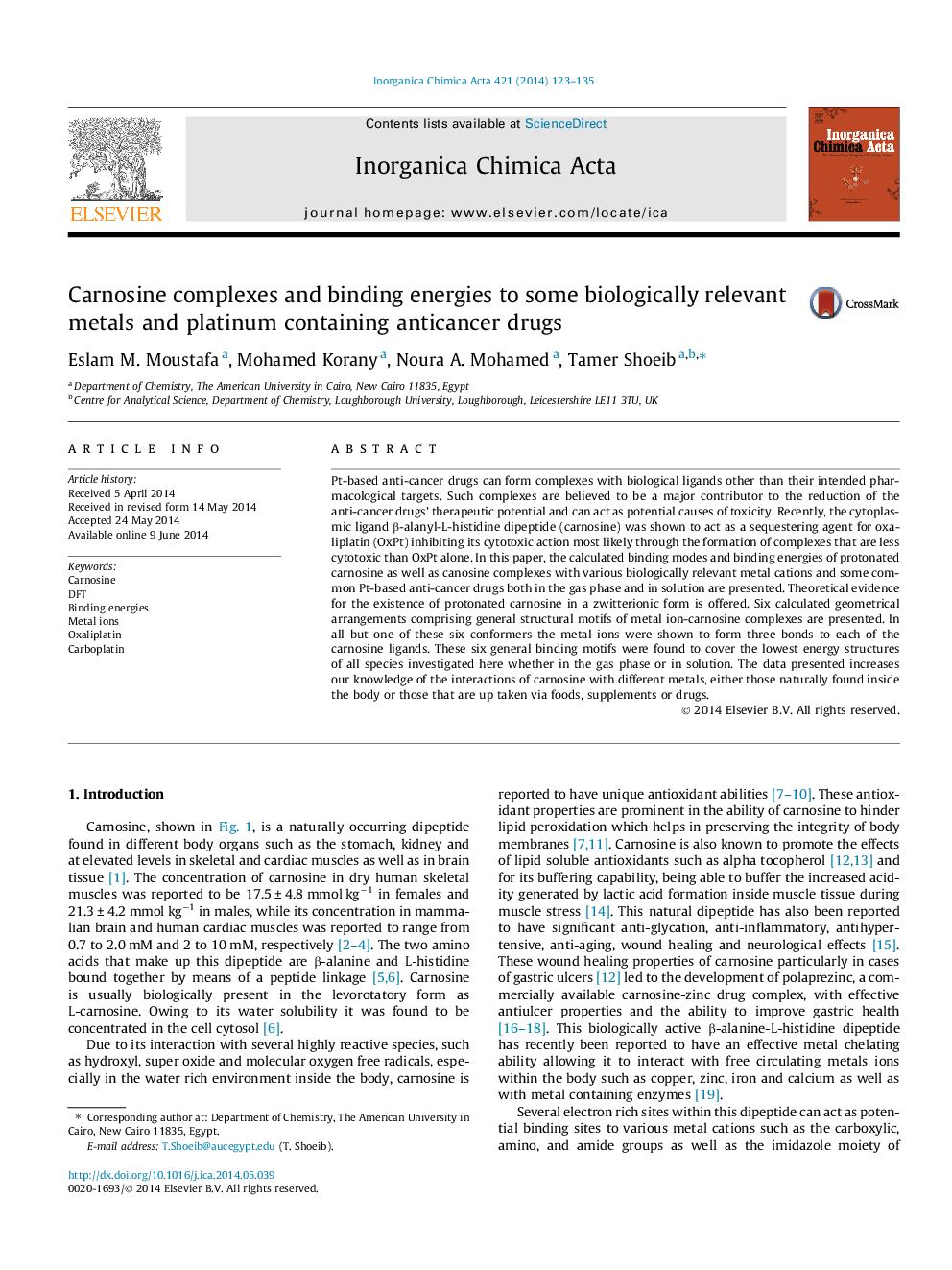| کد مقاله | کد نشریه | سال انتشار | مقاله انگلیسی | نسخه تمام متن |
|---|---|---|---|---|
| 1308100 | 1499167 | 2014 | 13 صفحه PDF | دانلود رایگان |
• General geometrical motifs presented for carnosine metal cation complexes.
• Proton affinity and metal binding energies to carnosine are calculated.
• Evidence of zwitterionic carnosine is presented
• Geometries of complexes of oxaliplatin and carboplatin to carnosine are presented
Pt-based anti-cancer drugs can form complexes with biological ligands other than their intended pharmacological targets. Such complexes are believed to be a major contributor to the reduction of the anti-cancer drugs’ therapeutic potential and can act as potential causes of toxicity. Recently, the cytoplasmic ligand β-alanyl-L-histidine dipeptide (carnosine) was shown to act as a sequestering agent for oxaliplatin (OxPt) inhibiting its cytotoxic action most likely through the formation of complexes that are less cytotoxic than OxPt alone. In this paper, the calculated binding modes and binding energies of protonated carnosine as well as canosine complexes with various biologically relevant metal cations and some common Pt-based anti-cancer drugs both in the gas phase and in solution are presented. Theoretical evidence for the existence of protonated carnosine in a zwitterionic form is offered. Six calculated geometrical arrangements comprising general structural motifs of metal ion-carnosine complexes are presented. In all but one of these six conformers the metal ions were shown to form three bonds to each of the carnosine ligands. These six general binding motifs were found to cover the lowest energy structures of all species investigated here whether in the gas phase or in solution. The data presented increases our knowledge of the interactions of carnosine with different metals, either those naturally found inside the body or those that are up taken via foods, supplements or drugs.
Calculated binding modes and energies of protonated carnosine and its complexes with several metal cations are presented. Six calculated geometries representing general structural motifs of these complexes are shown. In all but one of these the metal was shown to be tri-dentate. These binding motifs were found to cover the lowest energy structures of all species investigated here whether in the gas phase or in solution. Carnosine complexes with oxaliplatin and carboplatin were also investigated.Figure optionsDownload as PowerPoint slide
Journal: Inorganica Chimica Acta - Volume 421, 1 September 2014, Pages 123–135
